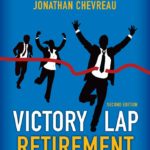They say a million bucks or so ain’t what it used to be … but I still think that’s a pile of money.
Which begs the question: does this couple with C$1.2 million in invested assets have enough to retire on?
Before we get into this latest case study however (thanks to a reader question by the way, I’ve changed the names of the readers for privacy reasons), this is a great time to remind you I’ve done other case studies like this on my site before: there are a few on this Retirement page in particular.
Mike and Julie want to spend $50,000 per year. Did they save enough?
This single senior hopes he can retire at age 60 on a lower income. Is it possible?
What is enough for some is not enough for others
Passionate readers of this site will know I believe personal finance is personal. What works well for some investors or families will not work at all for others.
You need to carve your own financial path.
The 4% rule says you should be able to ‘safely’ withdraw 4% of your original portfolio each year, adjusted for inflation, for at least 30 years and have a reasonably high chance of having money left over.
This means, in more practical terms based on this rule, that a $1.2 M portfolio should be able to last ~ 30 years (or more) by withdrawing $48,000 in year 1 of retirement ($1.2 M x 0.04), then increasing that amount over time with inflation.
That said, while having a core spending plan is all fine and good, it’s also having flexibility designed into your plan that is essential for success. You need to consider your spend on travel, hobbies, home renovations but also the ability to cover emergencies and more during retirement.
Rates of return also matter
The potential sequence of many bad years in the stock market could crush a retirement plan if you’re not careful. Also, while less risky portfolios (i.e., more fixed income portfolios) might fluctuate less in the short term, over the long term this will have a big impact on your returns. This means a more conservative portfolio can actually increase the risk of running out of money …
Karla and Toby case study
To help us figure out if this couple, who has a seemingly healthy $1.2 M in the bank, have “enough money” I’ve once again enlisted the help of Owen Winkelmolen, an advice-only financial planner (FPSC Level 1) and founder of PlanEasy.ca.
Owen let’s get into it!
Sure Mark!
Case study overview
First off, I want to say Karla and Toby are in a very good financial position for retirement with over $1M in financial assets in their 50s. That is excellent.
That said, they face some risk in the future. Let’s look at the information and numbers they sent you:
- Karla, was and remains stay at home mom, Age 54.
- Toby, marketing manager, makes $110,000 per year now. Age 56. Toby wants to retire early next year in January when he turns 57. You told me they would love to start their winter renting from a Florida condo: sounds great!
- They have lived in Canada their entire life. (re: they expect CPP and OAS benefits to come).
- They live in Calgary, Alberta and own their home.
- They have no debt other than $19,000 Line of Credit (LOC) balance used for a recent vacation and monies borrowed to fund their adult daughter’s wedding earlier this year.
- Karla has no workplace pension whatsoever although Toby has a small LIRA from a former employer to draw down.
Portfolio assets:
- They have $700,000 in combined assets within their RRSPs; invested in a mix of costly mutual funds.
- Toby has $50,000 in his Locked-In Retirement Account (LIRA). Invested in similar mutual funds above.
- They have $150,000 (combined) invested within their TFSAs. They hold a mix of Canadian REITs and a few Canadian bank stocks.
- They’ve got about $50,000 cash in an interest savings account.
- Toby has $250,000 invested in a taxable/non-registered account that includes a mix of cash, U.S. stocks and some Canadian dividend paying stocks.
All told, they have about $1.2 million in investable assets and their home value is estimated at $550,000. They are considering selling their home as they get older and renting, including renting property in Florida each winter.
You also told me they have one car, now paid for, a 2014 Range Rover SUV and no plans to get a new one until at least five years from now.
Mark those are great details to start some analysis with …
Owen’s analysis
Based on what details you shared with me Mark, because a large portion of their desired retirement spending will come from their investment portfolio, this creates a high risk of running out of money if they were to experience a period of poor investment returns in the future. We’ll get into that in a bit. Continue Reading…








